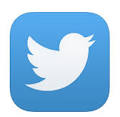Using Rare Materials
Prepared by the Philadelphia Area Consortium of Special Collections Libraries (PACSCL)
Don't be fooled by the quiet look of a special collections library. Thereís real excitement in tracking down information in old documents. Youíll find that the special collections library research for your National History Day project is part detective work and part treasure hunt.
With a little information and some advance planning, you can be researching with the best of them. Here are ten tips to help you research like a pro at your very first visit.
Planning Your Visit
- Research the library on the web and call, if necessary, before you go. Identify yourself as a National History Day student.
- Search for materials related to your topic on the libraryís online catalog. But remember, some libraries donít have records for all of their materials in their electronic catalogs. Look for web pages with titles such as "collection description" or "finding aids" — these will tell you more about materials in the libraryís collection. Looking at their online exhibitions or digital materials will also help.
- Check to see if there are age restrictions. Some libraries will not allow users under a certain age, and others require younger users to be accompanied by an adult. Many libraries require a photo ID for admittance.
- Find out if laptops are permitted. Many libraries allow this and even have electrical outlets in the center of the tables.
- Read through the libraryís other policies — hours, photocopies, limits on how many items you may consult at one time, etc. Many special collections libraries are not open evenings or weekends; others have only limited evening/weekend hours.
- If the libraryís hours are "open by appointment," or if they ask users to set up an appointment, e-mail or telephone the library with your request.
- Allow plenty of time for your research.
- It takes longer to work with special collections materials than with books that you can pull off your regular libraryís shelves. If the materials you are working with are old or fragile, it will take you longer to handle them properly, to decipher faded or unusual handwriting, or to follow old-fashioned ways of phrasing things. It will also take more time for you to get materials or arrange for photocopies than you may be used to.
At the Library
- Bring the appropriate ID and/or adult; be prepared to sign in and to be asked to put your things in a locker.
- Special collections libraries contain rare and unique materials, which are more valuable than ordinary books and magazines. Unfortunately, this makes theft a problem. Small books or important documents can be easily slipped into a jacket, a purse, or a notebook. Most special collections libraries will require you to put these personal possessions into a locker and will only let you bring a small notebook into the library. Some will also check this notebook as you leave.
- Bring pencils, writing paper, and eraser, and money for photocopies.
- Most of these items are self-explanatory, but why pencils? Most special collections libraries do not allow you to use pens because of the danger of accidentally marking a book or manuscript. The librarian can provide you with a pencil if you forget yours, but you may want to bring a mechanical pencil so that you donít need to make trips to the pencil sharpener.
- Talk with a reference librarian about your project.
- Whether you have made a reference appointment in advance or not, itís a good idea to talk with one of the reference library staff about your project. He or she may be able to suggest sources that you might not find on your own, and give you tips on how to use the online catalog, a card catalog, or a manuscript finding aid. In some cases, you may also be referred to other special collections libraries in the area.
- Be prepared to fill out requests for materials and to wait until the librarians can get them.
- Special collections libraries are different than your local library. After you consult the catalog or finding aid to find the "call number" of the materials you want, you must fill out a call slip. The librarian will then bring you the materials. (Librarians call these requests "paging requests" and they call the process of getting the materials "paging.") Many libraries will let you consult materials in the reference section or look at items on display while you wait.
- You may be assigned a specific seat in the reading room. If this is the case, be sure to note your seat number so that you can include this on the call slip.
- Learn how to handle fragile items.
- You may be asked to put on special white gloves to handle certain materials, such as photographs, or even some books and manuscripts. This is to keep the oils on your hands from damaging the materials.
- If you are consulting a fragile book or a bound manuscript, you may be given a book support or "cradle" to help protect and support the book. You may also be provided with a "snake," which is a velvet tube filled with buckshot, to help to keep pages open.
- Library staff will almost certainly instruct you in the way to handle your materials and to use book supports and snakes, but if you have any doubts, donít hesitate to ask! They will respect your desire to help care for their special collections by handling library materials properly.
- Be prepared: photocopies are rarely self-service, and some things canít be photocopied.
- Special collections libraries hardly ever have self-service photocopying. Be sure to ask about the procedure for requesting photocopies, and how long it will take, when you hand in your call slips. Depending on how busy a library is when you visit, you may have to return another day for your copies, or arrange to have them mailed to you. Photocopies are sometimes more expensive in special collections libraries, because they must be copied by trained staff on special copiers that help to protect old and fragile books and manuscripts.
- Some materials are too fragile to be photocopied at all. You can ask about having them photographed, but this will be expensive and will take time. If you have items photographed, you will probably also have to sign papers saying that you understand how you may use the photographs.
- Be sure your notes include everything youíll need for your bibliography.
- Before going to the library, check with your instructor about how to refer to rare and unique materials in your bibliography. Then, be sure that you have noted everything about the library materials that you will need. Itís very easy to get so wrapped up in your research that you forget this important step, especially when you are working with new kinds of materials.
- One last thing: be a considerate researcher.
- If you stop to think about it, common sense will tell you that there are two important things that make a considerate researcher.
- One is taking steps to protect the rare, unique, and fragile items you will be consulting. This means no food, no drink, no gum, and no ink — and of course careful handling.
- The second is taking steps to be considerate of other users. Many public libraries these days are more relaxed about noise and distraction than in the past, but a special collections library is still a place where most users are serious researchers, and they may have trouble ignoring background noise. Try to keep noise to a minimum (leave your Walkman or iPod in your locker).
- Leave your cell phone and pager in your locker as well, or turn it to vibrate and donít answer it in the reading room. If you receive an important call or message, go to a public area or outside the building to return the call.
For further information on PACSCL's member libraries and their participation in National History Day, see PACSCL's National History Day Page



